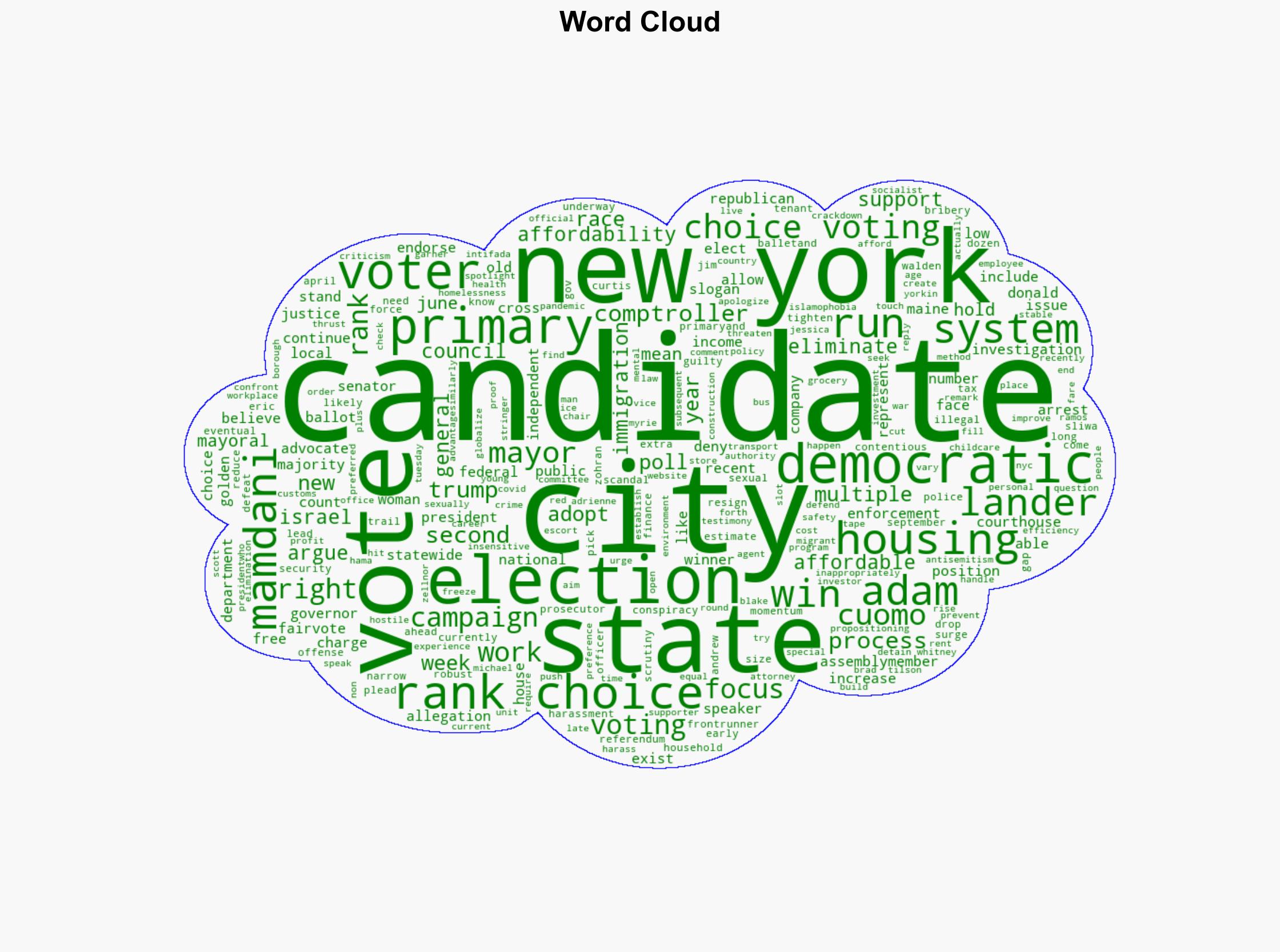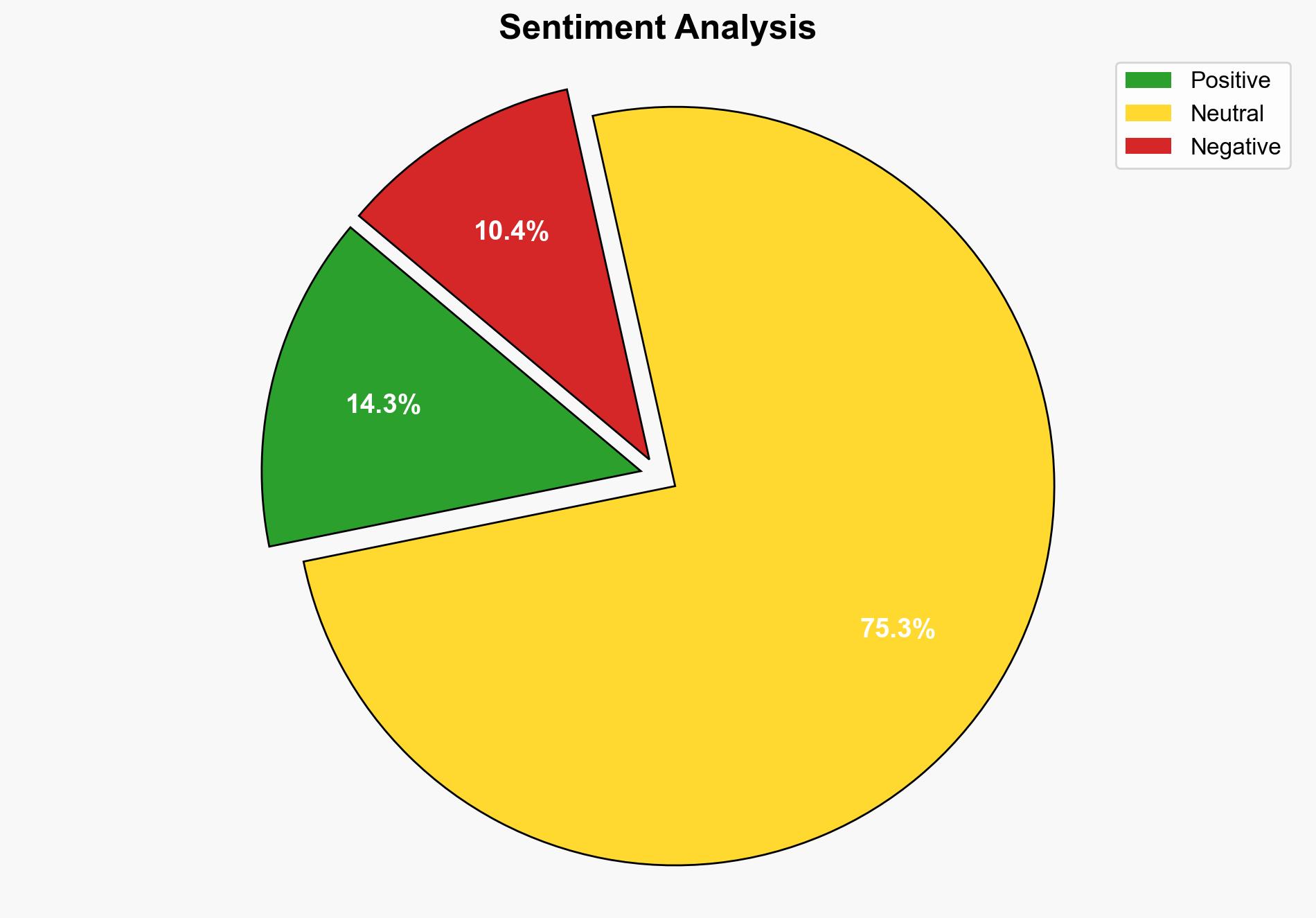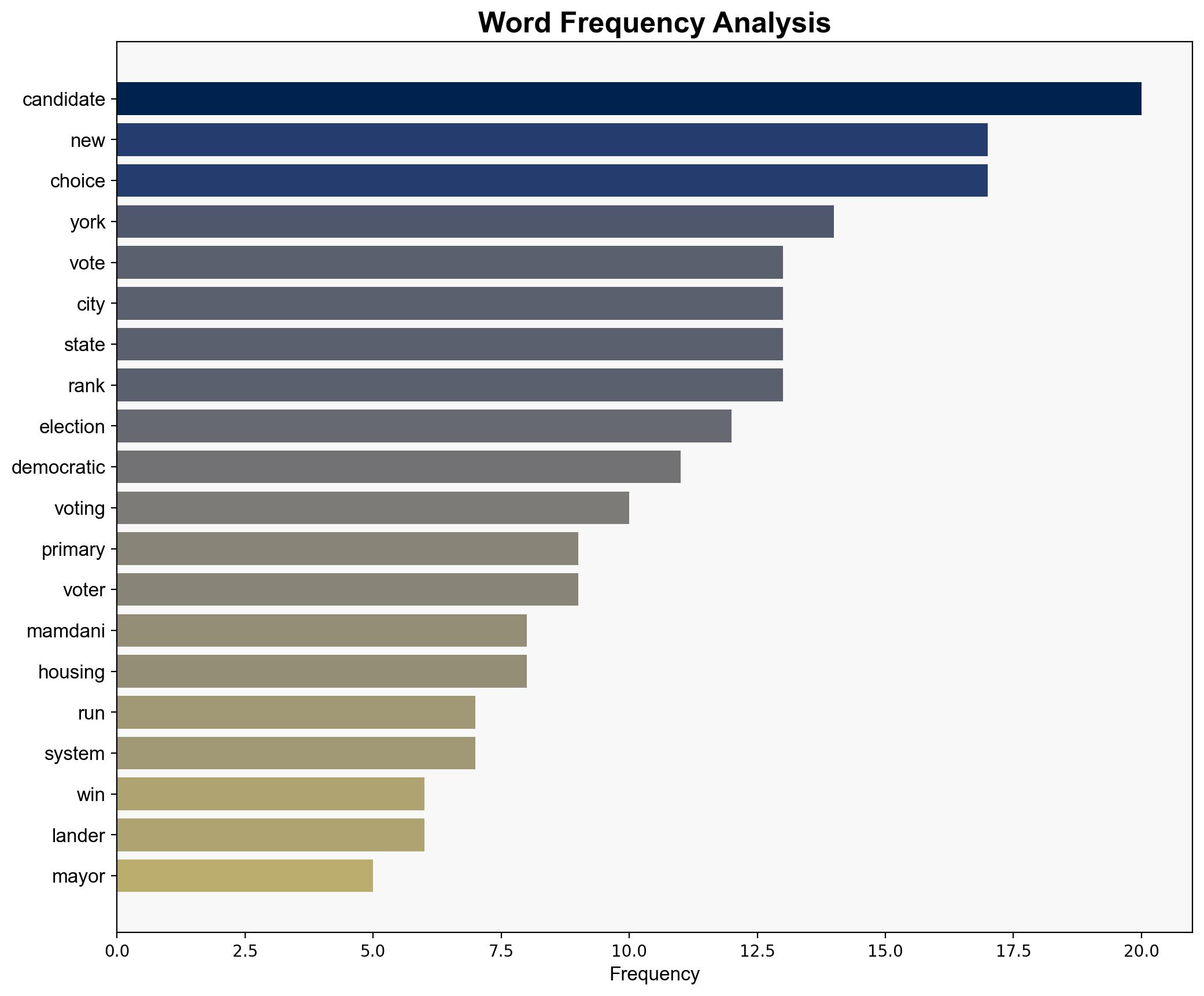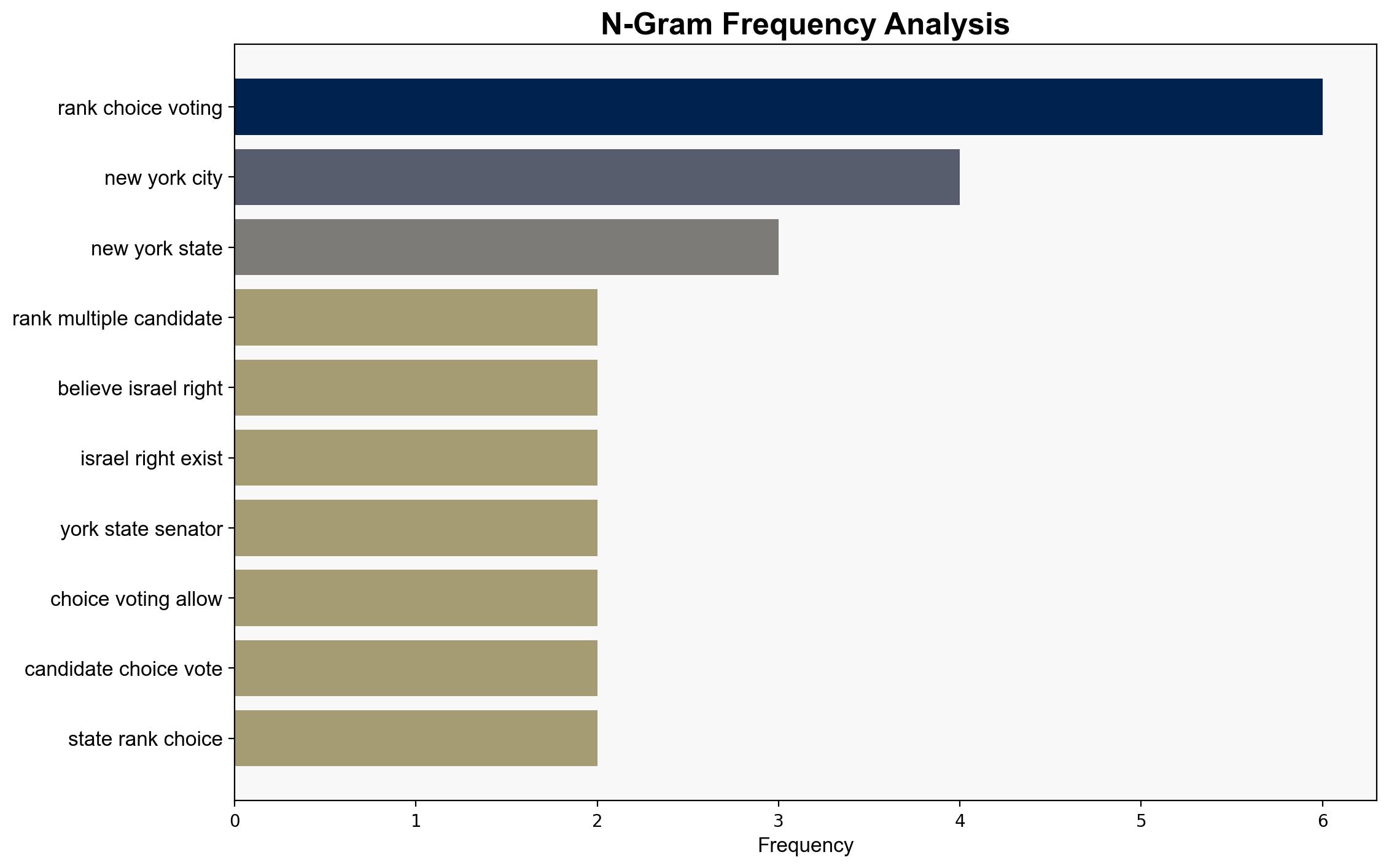How Ranked-Choice Voting in the New York City Mayoral Primary Works – Time
Published on: 2025-06-20
Intelligence Report: How Ranked-Choice Voting in the New York City Mayoral Primary Works – Time
1. BLUF (Bottom Line Up Front)
The New York City mayoral primary is utilizing ranked-choice voting, a system allowing voters to rank multiple candidates. This method could significantly impact the election outcome, especially in a contentious race where candidates like Eric Adams, Zohran Mamdani, and Brad Lander are prominent figures. The primary’s dynamics are influenced by issues such as affordability, housing, and public safety. Strategic recommendations include monitoring the ranked-choice voting process for potential irregularities and understanding its implications for future elections.
2. Detailed Analysis
The following structured analytic techniques have been applied to ensure methodological consistency:
Causal Layered Analysis (CLA)
Surface events include the adoption of ranked-choice voting and the contentious nature of the primary. Systemic structures involve the electoral process and campaign strategies focusing on affordability and public safety. Worldviews reflect a shift towards progressive policies, with candidates advocating for housing reforms and police force adjustments. Myths center around the potential for ranked-choice voting to democratize the electoral process.
Cross-Impact Simulation
The implementation of ranked-choice voting may influence neighboring states considering similar electoral reforms. It could also affect political alliances and campaign strategies across the country.
Scenario Generation
Scenarios include:
– A successful implementation of ranked-choice voting leading to a more representative election outcome.
– Potential voter confusion or administrative challenges undermining the process.
– Increased political polarization if the system is perceived as favoring certain candidates.
Bayesian Scenario Modeling
Probabilistic forecasts suggest a high likelihood of ranked-choice voting influencing future electoral reforms nationwide, contingent on its perceived success in New York City.
3. Implications and Strategic Risks
The adoption of ranked-choice voting poses risks such as voter confusion and administrative challenges. It also presents opportunities for more representative election outcomes. The primary’s focus on affordability and public safety highlights systemic vulnerabilities in housing and law enforcement policies. Cross-domain risks include potential cybersecurity threats to the voting process and political instability stemming from contentious election results.
4. Recommendations and Outlook
- Enhance voter education to mitigate confusion about the ranked-choice voting process.
- Strengthen cybersecurity measures to protect the integrity of the election.
- Monitor post-election analyses to assess the impact of ranked-choice voting on election outcomes.
- Scenario-based projections:
- Best case: Successful implementation leads to broader electoral reforms.
- Worst case: Systemic failures result in contested election results.
- Most likely: Incremental improvements in electoral processes with lessons learned for future elections.
5. Key Individuals and Entities
Eric Adams, Zohran Mamdani, Brad Lander, Curtis Sliwa, Jim Walden, Adrienne Adams
6. Thematic Tags
electoral reform, ranked-choice voting, political strategy, housing policy, public safety





